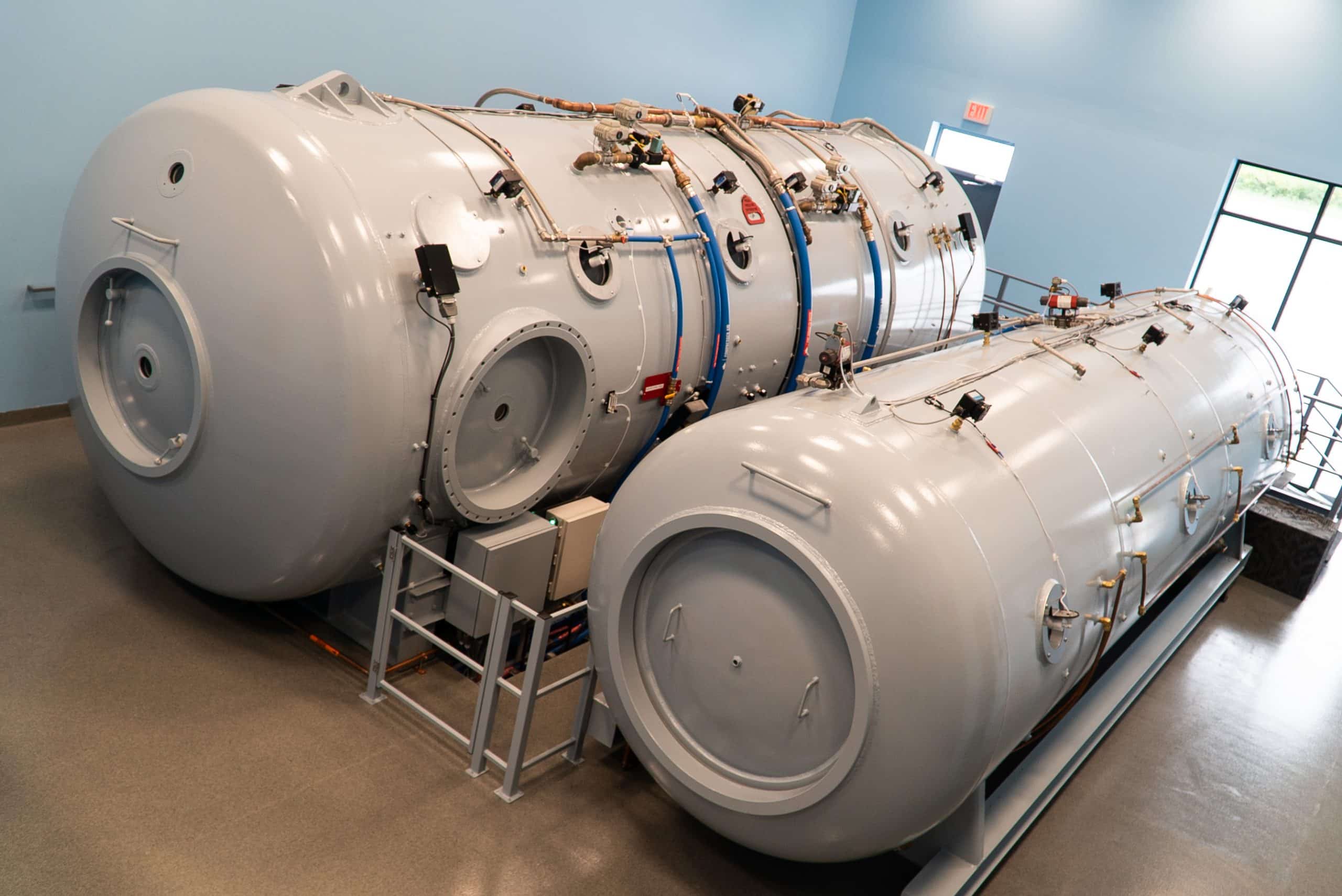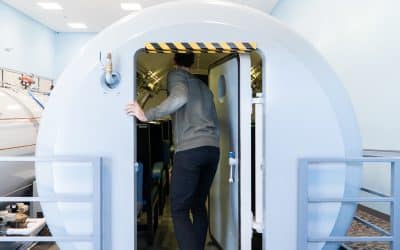Abstract Background: Patients with Crohn's disease (CD) frequently complain of cognitive difficulties such as problems with concentration and clouding of thought, yet this has scarcely been objectively defined and underlying mechanisms remain unknown. Objective: The...
Inflammatory Bowel Disease
Explore the latest research on the use of Hyperbaric Oxygen Therapy (HBOT) to treat Inflammatory Bowel Disease. Extivita maintains an extensive publication database for Inflammatory Bowel Disease and various other indications with therapies such as Hyperbaric Oxygen Therapy, Neurofeedback, Nutritional IV Therapy, Infrared Sauna, and Pulsed Electromagnetic Field Therapy. Explore our database on Acne and Hyperbaric Oxygen Therapy aka, HBOT, below.
For a complete list of indications treated at Extivita, explore the conditions we treat.
Hyperbaric Oxygen Therapy: Side Effects Defined and Quantified.
Abstract: Significance: Hyperbaric oxygen therapy (HBOT) is an important advanced therapy in the treatment of problem wounds, including diabetic foot ulcers and late effect radiation injury. HBOT remains among the safest therapies used today. Nonetheless, there are...
Multifocal osteonecrosis in a patient with anamnestic ulcerative colitis. Is there a relationship with the disease and the use of glucocorticoids twenty years before? A brief review of the literature.
In 2013 a 40 year old man came to visit in our Rheumatology Unit because of a recent bilateral shoulder and hip pain. He had been treated from 1990 to 2000 with Cyclosporin A and Sulfasalazyn because of an ulcerative colitis which was completely in remission from 2000 . Glucocorticoids at the mean daily dose of 50 mg were administered only in the first period (1990-92). X-plain rays showed a suspicious multifocal osteonecrosis of both femoral and humeral heads. Magnetic Resonance confirmed the diagnosis (stage III and IV following Ficat and Arlet’s criteria). The patient was treated with a cycle of hyperbaric oxygen therapy, with two cycles of intravenous clodronate and with a 2-month cycle of teriparatide.
Adjunctive Hyperbaric Oxygen Therapy promotes successful healing in patients with refractory Crohn’s disease.
To investigate de adjunctive effect of Hyperbaric Oxygen Therapy in a group of patients with refractory Crohn’s disease. A total of 29 subjects with refractory Crohn’s disease were submitted to daily sessions of Hyperbaric Oxygen Therapy, in a 2800 Sechrist Monoplace Hyperbaric Chamber (Sechrist, USA) pressurized to 2.4 ATA. Each session lasted 2 hours. The endpoint was closure of enterocutaneous fistulas and complete healing of Pyoderma Gangrenosum and perineal Crohn’s disease. A total of 829 HBOT sessions were performed and no complications were noted. Overall success rate was 76% (22 cases). Pyoderma Gangrenosum and enterocutaneous fistulas had the highest successful healing rates (100% and 91%, respectively).
Umbilical cord-derived mesenchymal stem cell transplantation combined with hyperbaric oxygen treatment for repair of traumatic brain injury.
Transplantation of umbilical cord-derived mesenchymal stem cells (UC-MSCs) for repair of traumatic brain injury has been used in the clinic. Hyperbaric oxygen (HBO) treatment has long been widely used as an adjunctive therapy for treating traumatic brain injury. UC-MSC transplantation combined with HBO treatment is expected to yield better therapeutic effects on traumatic brain injury. In this study, we established rat models of severe traumatic brain injury by pressurized fluid (2.5-3.0 atm impact force). The injured rats were then administered UC-MSC transplantation via the tail vein in combination with HBO treatment.
Hyperbaric oxygen therapy stimulates colonic stem cells and induces mucosal healing in patients with refractory ulcerative colitis: a prospective case series.
Hyperbaric oxygen (HBO) is used as part of treatment in a variety of clinical conditions. Its use in the treatment of ulcerative colitis has been reported in few clinical reports. We report the effect of HBO on refractory ulcerative colitis exploring one potential mechanism of action. A review of records of patients with refractory ulcerative colitis who received HBO was conducted. Clinical and histopathological scoring was utilised to evaluate the response to HBO therapy (HBOT). All patients manifested clinical improvement by the 40th cycle of HBOT. The median number of stool frequency dropped from seven motions/day (range=3-20) to 1/day (range=0.5-3), which was significant (z=-4.6, p<0.001).
Antioxidant therapy for treatment of inflammatory bowel disease: Does it work?
Abstract Oxidative stress (OS) is considered as one of the etiologic factors involved in several signals and symptoms of inflammatory bowel diseases (IBD) that include diarrhea, toxic megacolon and abdominal pain. This systematic review discusses approaches,...
Ascorbic acid ameliorates oxidative stress and inflammation in dextran sulfate sodium-induced ulcerative colitis in mice
Abstract Ascorbic acid (AA) has been shown to exert beneficial effects, including mitigating oxidative stress and inhibiting inflammation. However, the preventative effect of vitamin C in chronic inflammatory diseases such as inflammatory bowel disease (IBD) remains...
Reinforcement of the bactericidal effect of ciprofloxacin on Pseudomonas aeruginosa biofilm by hyperbaric oxygen treatment.
Chronic Pseudomonas aeruginosa lung infection is the most severe complication in cystic fibrosis patients. It is characterised by antibiotic-tolerant biofilms in the endobronchial mucus with zones of oxygen (O2) depletion mainly due to polymorphonuclear leucocyte activity. Whilst the exact mechanisms affecting antibiotic effectiveness on biofilms remain unclear, accumulating evidence suggests that the efficacy of several bactericidal antibiotics such as ciprofloxacin is enhanced by stimulation of the aerobic respiration of pathogens, and that lack of O2 increases their tolerance. Reoxygenation of O2-depleted biofilms may thus improve susceptibility to ciprofloxacin possibly by restoring aerobic respiration.





